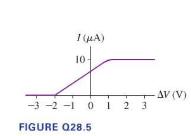Figure Q28.5 shows the typical photoelectric behavior of a metal as the anode-cathode potential difference (Delta V)
Question:
Figure Q28.5 shows the typical photoelectric behavior of a metal as the anode-cathode potential difference \(\Delta V\) is varied.
a. Why do the curves become horizontal for \(\Delta V \geqq 1 \mathrm{~V}\) ? Shouldn't the current increase as the potential difference increases? Explain.
b. Why doesn't the current immediately drop to zero for \(\Delta V<0 \mathrm{~V}\) ? Shouldn't \(\Delta V<0 \mathrm{~V}\) prevent the electrons from reaching the anode? Explain.
c. The current is zero for \(\Delta V<-2.0 \mathrm{~V}\). Where do the electrons go? Are no electrons emitted if \(\Delta V<-2.0 \mathrm{~V}\) ? Or if they are, why is there no current? Explain.
Step by Step Answer:

College Physics A Strategic Approach
ISBN: 9780321907240
3rd Edition
Authors: Randall D. Knight, Brian Jones, Stuart Field





